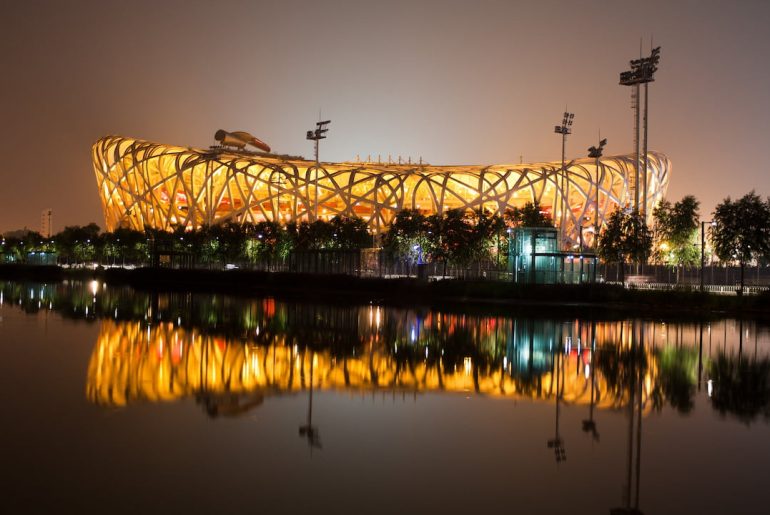Biomimicry Architecture is an innovative approach that draws inspiration from nature’s design strategies to create sustainable and efficient structures. By observing and emulating the patterns, processes, and systems in the natural world, architects and designers can unlock groundbreaking solutions that minimize environmental impact and enhance functionality and resilience. This article explores the principles of biomimicry, its role in architecture, and how it can revolutionize how we design and construct buildings. Additionally, we will delve into case studies, challenges, and future possibilities of biomimicry architecture, highlighting its immense potential for shaping a more sustainable and harmonious built environment.
What is Biomimicry?

Biomimicry is a design approach that draws inspiration from nature to solve human challenges. It involves studying the genius ideas found in the natural world and applying them to create innovative and sustainable solutions. In architecture, biomimicry allows architects to design buildings that mimic nature’s forms, processes, and systems, leading to aesthetically pleasing and environmentally friendly structures. Architects can address challenges like energy efficiency, water management, and structural stability by learning from plants, animals, and ecosystems.
Understanding the Principles of Biomimicry: adapting nature’s solutions

Biomimicry is not just about copying nature; it’s about understanding and adapting the underlying principles to human needs. By observing how organisms have evolved to solve similar problems, designers can replicate those strategies in their creations. Biomimicry as a design approach encourages us to ask questions such as “How does nature manage to stay cool in the scorching desert?” or “How can we design a more efficient transportation system inspired by the behavior of ants?” By examining these natural solutions, designers can unlock innovative ideas and push the boundaries of sustainable design.
Key Principles of Biomimicry
Biomimicry revolves around a few fundamental principles that guide the design process. These principles include:
Emulate resilience
Nature has perfected the art of strength over millions of years. By learning how organisms endure and adapt to changing environments, designers can create structures that withstand various challenges, including climate change and natural disasters.
Optimize efficiency
Nature is the ultimate efficiency expert. From how plants capture and use sunlight to the efficient flight patterns of birds, nature has honed efficiency to its finest. By applying this principle, architects can develop buildings that optimize energy, water, and material usage.
Foster circularity
Nature doesn’t produce waste; it operates on a circular, closed-loop system. Architects can reduce waste by designing buildings that mimic this circularity and create structures that integrate seamlessly with their surrounding ecosystems.
Harnessing sustainable materials and technologies in Biomimicry Architecture

Biomimicry architecture not only focuses on design principles but also incorporates sustainable materials. Innovations like bio-based materials and self-healing concrete draw inspiration from nature to create eco-friendly building materials. For example, concrete that imitates coral’s structure makes it stronger and more durable. By utilizing these sustainable materials, architects can diminish the environmental impact of construction and design structures harmonizing with nature.
Technological advancements are crucial to the progression of biomimicry architecture. Architects can develop biomimetic designs using cutting-edge technologies such as 3D printing, robotics, and parametric modeling. 3D printing can reproduce intricate natural structures with precision, and robotics can emulate the efficiency of animal movements. These advancements provide architects with endless possibilities to create sustainable designs that were once inconceivable.
Case studies: Inspiring examples of Biomimicry in sustainable structures

Biomimicry, the practice of imitating nature in design, has demonstrated remarkable results in enhancing energy efficiency and sustainability in architecture. One notable example is the Eastgate Centre in Zimbabwe, which replicates termite mounds to create natural ventilation systems that reduce energy consumption. Similarly, the Bullitt Center in Seattle mimics the water collection capabilities of trees, efficiently capturing and distributing rainwater to reduce reliance on municipal sources.
Regarding structural adaptations, the Eden Project in the UK draws inspiration from soap bubbles and plant skeletal systems to create its iconic biomes. This biomimetic design allows for large, open spaces without excessive materials, resulting in a visually stunning and lightweight structure.
Overall, biomimicry architecture offers an innovative and sustainable approach to design. By embracing nature’s principles, utilizing sustainable materials and technologies, and learning from inspiring case studies, architects can create structures that harmonize with the environment while pushing the boundaries of creativity. This approach holds promise for a future where design and nature coexist perfectly.
The future of Biomimicry Architecture: advancements and possibilities

Biomimicry architecture is a field that is constantly evolving, with new trends and discoveries emerging regularly. One exciting trend is the exploration of biomaterials, such as self-healing concrete inspired by human skin. Advancements in computational design and artificial intelligence also allow architects to simulate and optimize biomimetic systems, pushing the boundaries of architectural innovation. The potential applications of biomimicry architecture are vast, from energy-efficient buildings inspired by termite mounds to urban planning strategies influenced by ant movement. Aside from the tangible benefits of sustainable design, biomimicry architecture can reshape our relationship with nature, fostering a deeper appreciation and inspiring us to live harmoniously with the natural world.
Designing for Resilience: Creating Sustainable Structures with Biomimicry
A biomimetic approach enhances resilience in buildings when faced with climate change and limited resources. By imitating nature’s strategies, architects can create structures that withstand environmental stresses and adapt and recover. Examples include self-cooling buildings inspired by termite mounds and water management systems inspired by forest hydrological cycles. Biomimicry architecture also emphasizes adaptability and flexibility, allowing structures to adjust to different environmental conditions. Responsive façades can optimize natural light and ventilation, resembling how leaves turn towards sunlight. This approach enables architects to design buildings that meet current needs while evolving and responding to future challenges.
Conclusion
Biomimicry architecture offers a sustainable and innovative design approach by learning from nature’s billions of years of evolution. Architects can create aesthetically pleasing and environmentally conscious structures by integrating nature’s processes. The future of biomimicry architecture holds vast potential for creating sustainable habitats that harmonize with the natural world. Embracing nature’s wisdom will lead to a more resilient and regenerative built environment for future generations.






